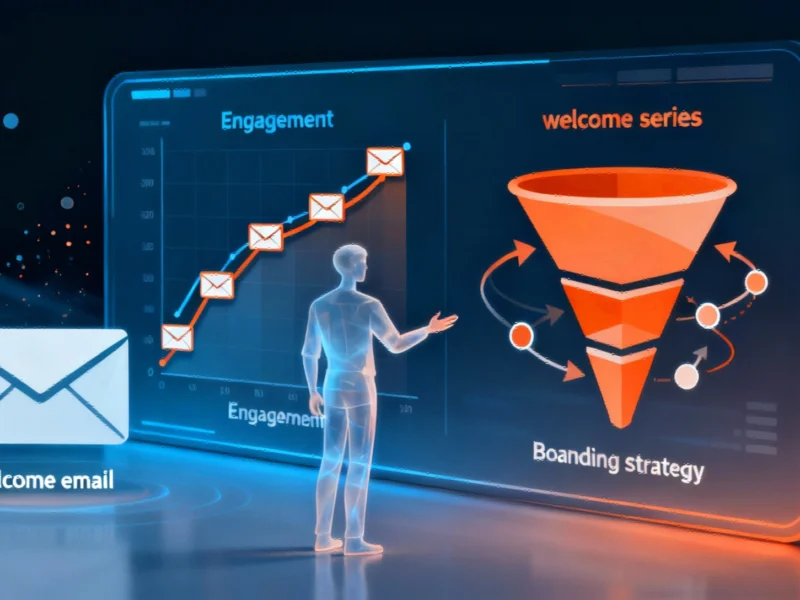Email Marketing Revenue Growth Masks Engagement Challenges
Despite projections showing significant growth in global email marketing revenue, brands are facing a perplexing decline in per-message engagement, according to industry analysis. Sources indicate this isn’t merely inbox fatigue but signals deeper strategic misalignment with evolving consumer expectations.
Tim Smith, President of Axle Agency, the award-winning marketing division of Data Axle, suggests the true issue isn’t email’s inherent value but rather a collective failure to evolve its strategic application. “Welcome flows set the tone for the entire customer relationship,” Smith stated in the analysis.
Multi-Touch Onboarding Delivers 42% Conversion Lift
Research based on over 22 million welcome flows reveals that brands utilizing multi-touch onboarding sequences secure an average of 42% greater lift in downstream conversion compared to single-message campaigns. The report states the initial 72 hours post-sign-up represent a critical activation window where high-intent signals are most prevalent.
Analysts suggest designing opening sequences should be treated like product architecture: deliberate, layered, and adaptive. Each touchpoint represents an opportunity to capture zero-party data and build relevance that compounds in value throughout the customer relationship.
Liquid Segmentation Outperforms Traditional Approaches by 38%
Traditional market segmentation based solely on demographics or historical behavior is proving insufficient in today’s rapidly changing consumer environment. The most effective email strategies are moving toward “liquid segments” defined by recency and velocity of customer responses and activity.
Axle Agency’s findings indicate that real-time logic applied to these liquid segments outperforms traditional segmentation by 38% across financial services and retail clients. This approach allows brands to trigger re-engagement messages precisely when subscriber activity indicates need for attention rather than adhering to arbitrary timeframes.
Curiosity-Driven Subject Lines Outperform Urgency by 22%
As inbox saturation increases, the efficacy of urgency-based language in email subject lines is steadily diminishing. Research shows subject lines designed to spark curiosity or offer unexpected insights outperform urgency-based language by up to 22%.
“Urgency language is losing effectiveness in saturated inboxes,” Smith noted. “What’s working now are subject lines that create narrative friction with questions, unexpected insights, or value-forward statements.” According to the analysis, phrases like “What we learned from your last visit” outperform “Don’t miss this offer” by 18% across tested segments.
AI Serves as Testing Accelerator, Not Strategy
The advancements in artificial intelligence have provided powerful new tools for content generation and personalization, but analysts suggest AI should primarily serve as a testing accelerator rather than the strategy itself. A recent Prosper Insights & Analytics survey revealed that 40% of U.S. adults are concerned that AI can provide wrong information.
Axle Agency’s data reveals a significant 34% performance lift when AI outputs are treated as test hypotheses rather than final deliverables. This approach ensures AI’s creative output is validated against real-world performance before deployment. eMarketer’s analysis of how B2B marketers use AI in email marketing reinforces that the technology’s greatest value lies in uncovering deeper insights and testing new hypotheses.
Strategic Integration Amplifies Email Value
Far from being an antiquated channel, email remains a cornerstone of effective digital communication when integrated thoughtfully into omni-channel strategies. A 2025 McKinsey report highlights the importance of strategic, transformative investments in capabilities such as AI, suggesting tested applications are crucial to unlocking business improvements.
According to reports from Axle Agency, email’s continued impact depends on marketers’ willingness to move beyond outdated, volume-driven tactics and embrace more adaptive, insight-led approaches that prioritize genuine engagement across all customer touchpoints.
This article aggregates information from publicly available sources. All trademarks and copyrights belong to their respective owners.



